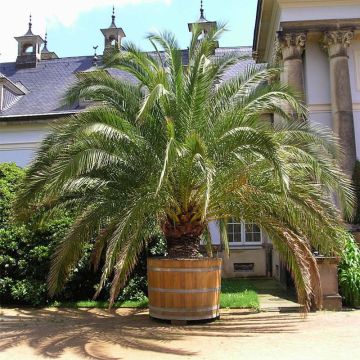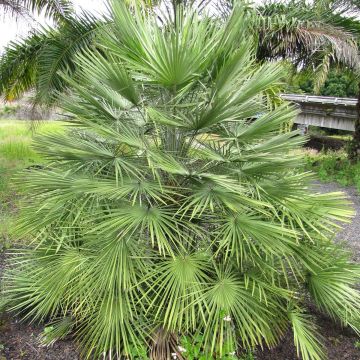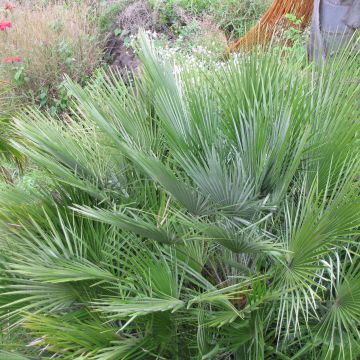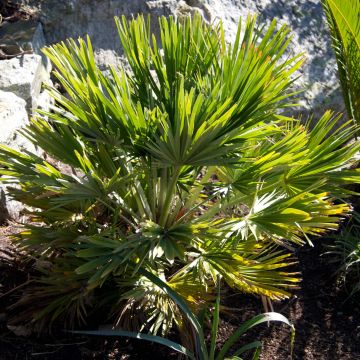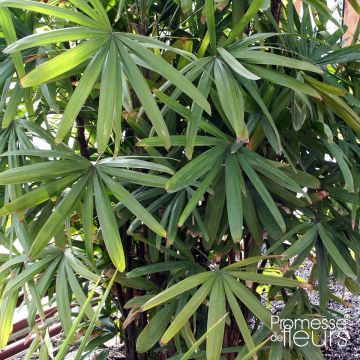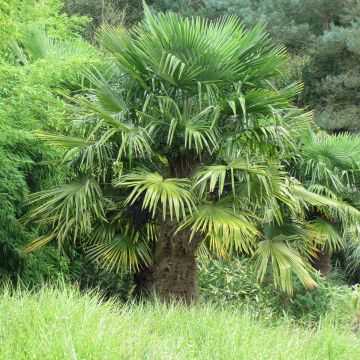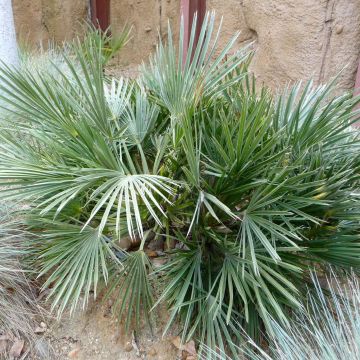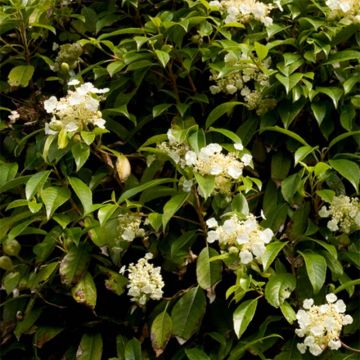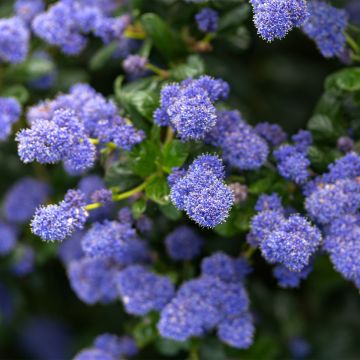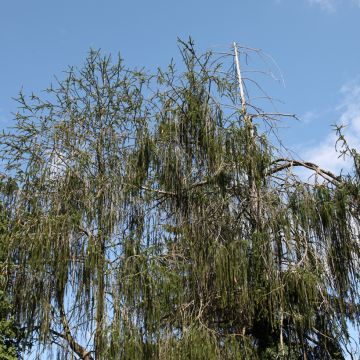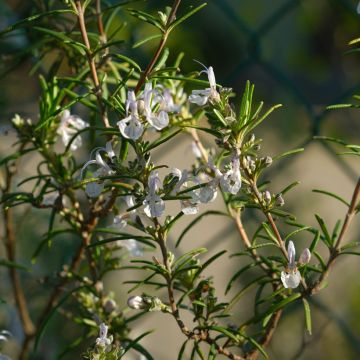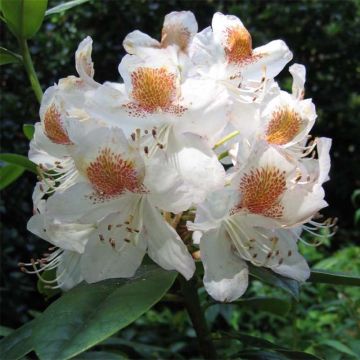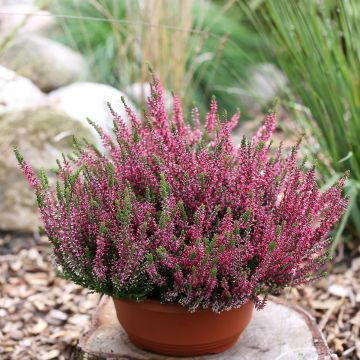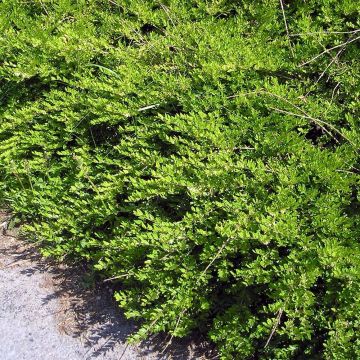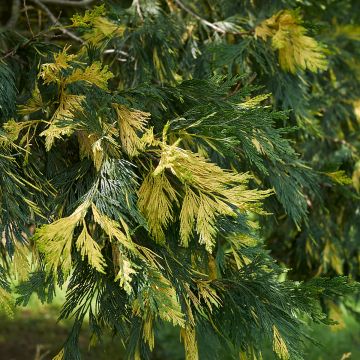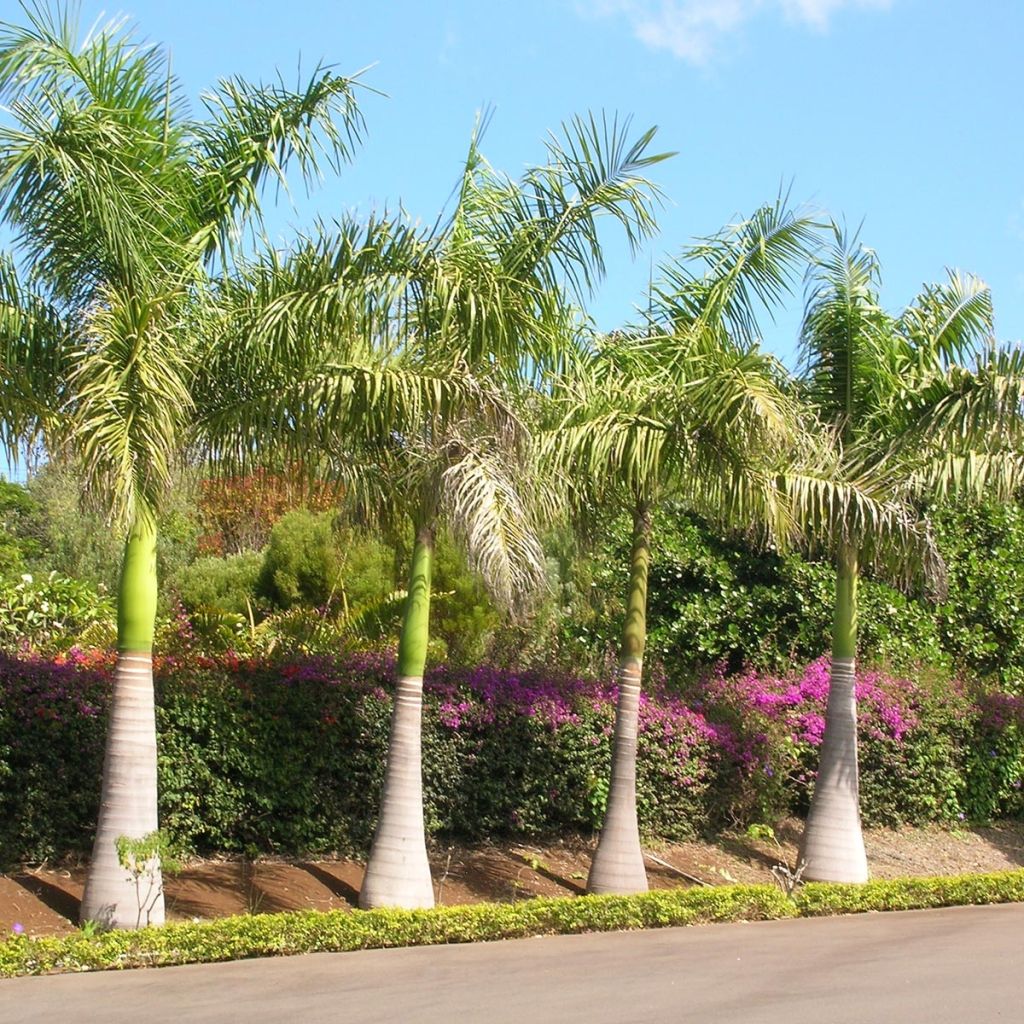

Roystonea regia - Palmier royal de Cuba
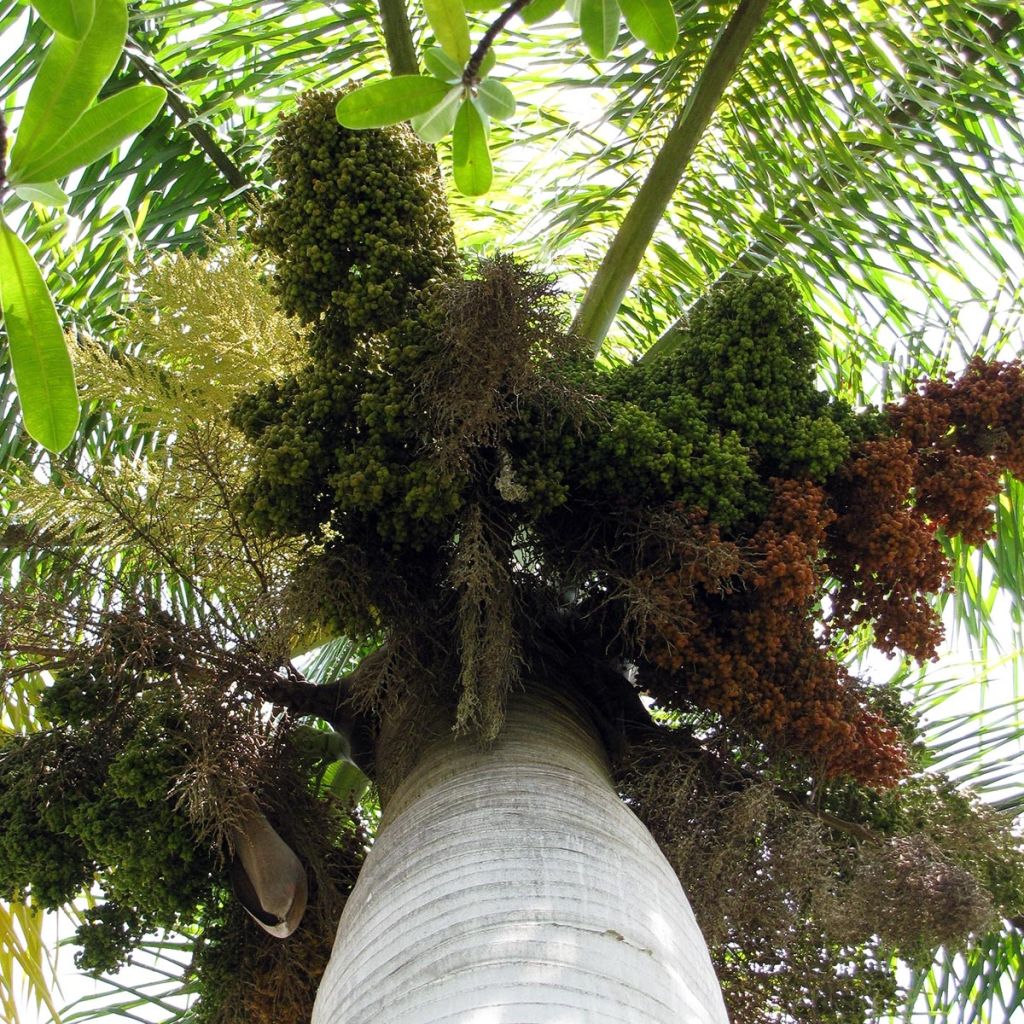

Roystonea regia - Palmier royal de Cuba
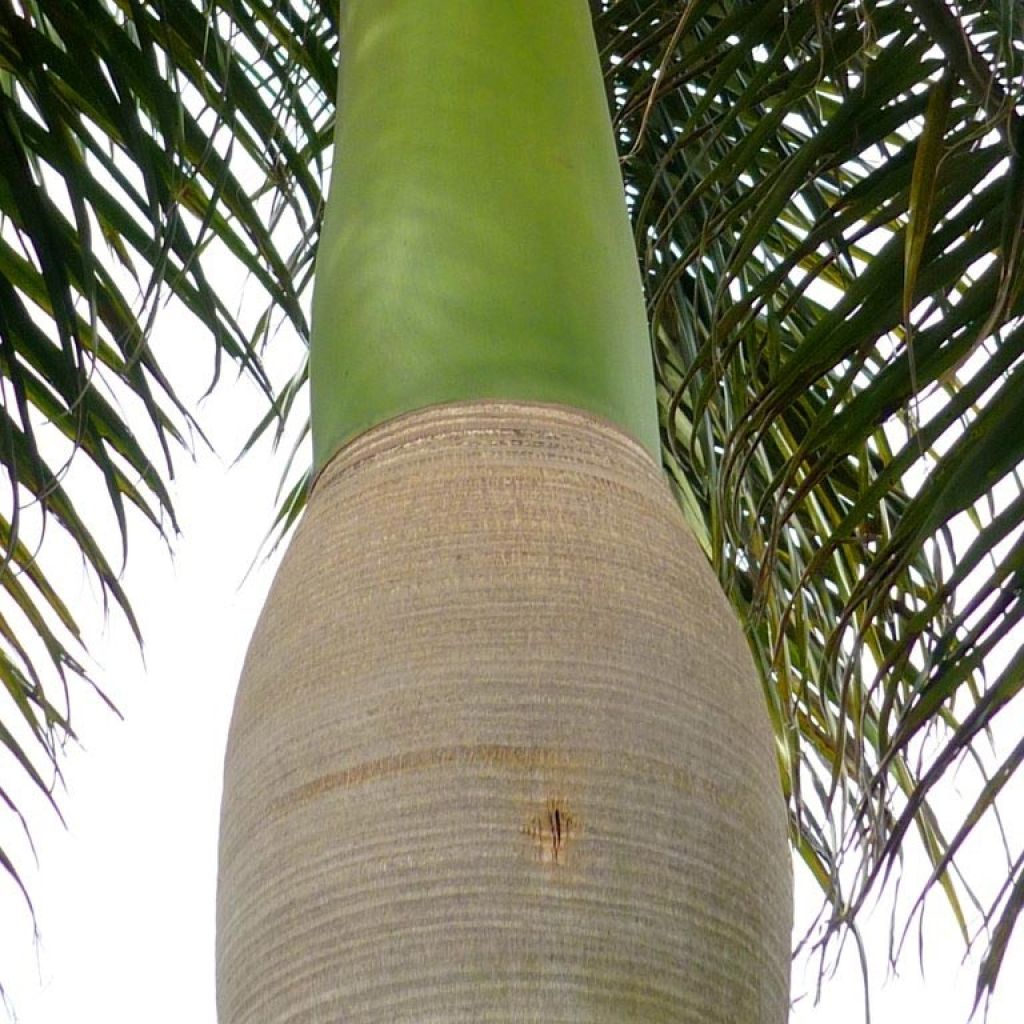

Roystonea regia - Palmier royal de Cuba
Roystonea regia - Cuban Royal Palm
Roystonea regia
Cuban Royal, Cuban Royal Palm, Royal Palm
Why not try an alternative variety in stock?
View all →This plant carries a 24 months recovery warranty
More information
We guarantee the quality of our plants for a full growing cycle, and will replace at our expense any plant that fails to recover under normal climatic and planting conditions.
Oversize package: home delivery by special carrier from €6.90 per order..
Express home delivery from €8.90.
Does this plant fit my garden?
Set up your Plantfit profile →
Description
Roystonea regia, more commonly known as the Royal Palm or the Cuban Royal Palm, is a large and majestic frost-sensitive palm tree that can only be grown in pots in temperate climates. It is a species that thrives in tropical, humid, and warm climates, making it a beautiful addition to a hot greenhouse or a veranda from a young age. This palm tree develops a very tall, smooth stipe resembling a column of marble, topped with a bouquet of slightly arched, feathery fronds in a magnificent prairie green colour. It grows very quickly and is also an easy plant to cultivate as long as it receives warmth, light, a humid atmosphere, and remains in a rich, moist soil. As it is sensitive to temperatures below 7°C (44.6°F), it is grown in containers outdoors during summer but in a warm greenhouse or heated veranda during winter.
Roystonea regia belongs to the family of Arecaceae. It is native to the Caribbean, Cuba, Mexico, and Florida. This beautiful palm tree develops a single, smooth, light grey but green in its upper part stipe, almost glossy. It has a characteristic swelling below the green area. The Royal Palm can reach a height of 30m (98ft) in nature, with a stipe diameter of 60cm (24in), but will remain much smaller in Europe, especially when grown in containers, where it won't exceed 5m (16ft) in height and 3m (10ft) in width. At the top of this stipe, a nearly round crown develops, composed of long pinnate fronds. The youngest fronds are upright, while the older ones are slightly drooping. Each frond, which can measure up to 3.50m (11ft) in length (2m (7ft) indoors), is divided into a large number of fairly wide leaflets, in a vibrant green colour, arranged in four rows. The dead fronds fall off naturally, without leaving any leaf scar on the stipe. Spectacular flowering occurs in summer on mature specimens. It develops under the crown of fronds, at the base of the upper green-coloured part of the stipe. These are large, branched and upright inflorescences, reaching a length of 1m (3ft). There are male and female flowers, carried by separate inflorescences. The flowers, ranging from cream white to pale yellow, are nectar-producing. After pollination by insects, they transform into 2cm (1in) long fruits, initially red and turning black when ripe.
This Cuban Royal Palm is a centrepiece for a tropical veranda or greenhouse. It will benefit from a higher natural humidity if placed next to other exotic plants (ornamental gingers, cycads, dwarf bananas, etc.) and if its pot is placed on a large saucer filled with clay pebbles that need to be regularly watered. Small plants like Japanese grass or Carex, for example, can be placed at its base.
Report an error about the product description
Roystonea regia - Cuban Royal Palm in pictures
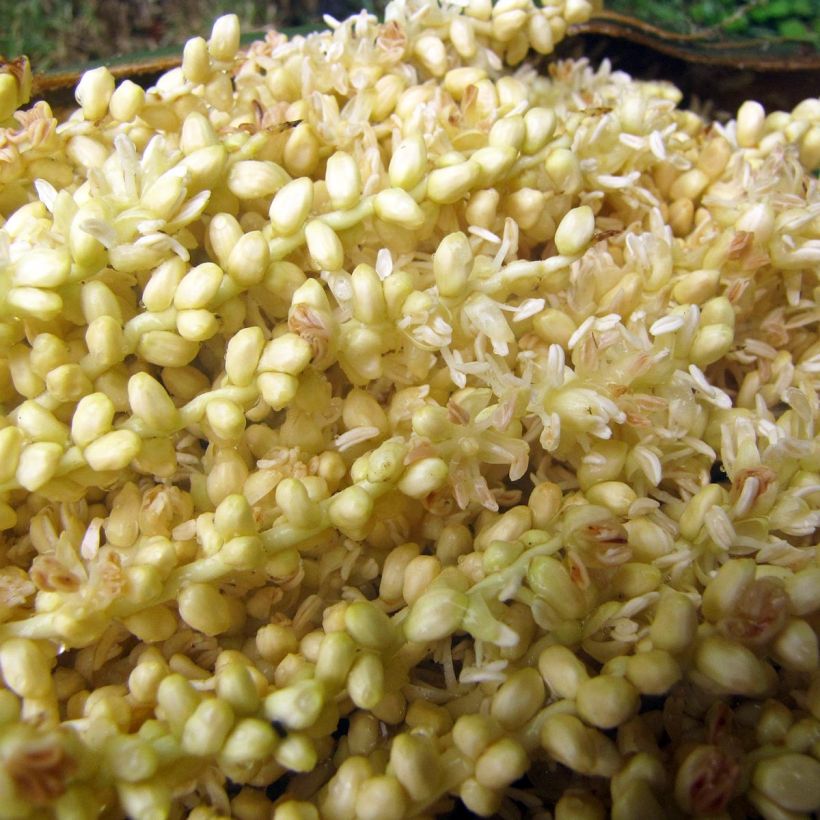

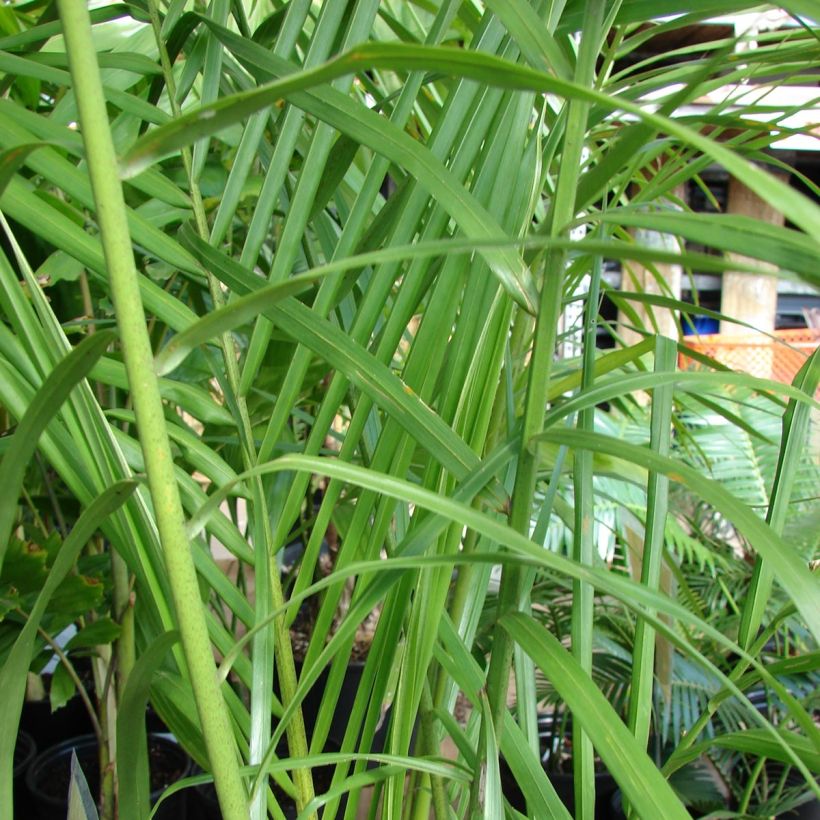

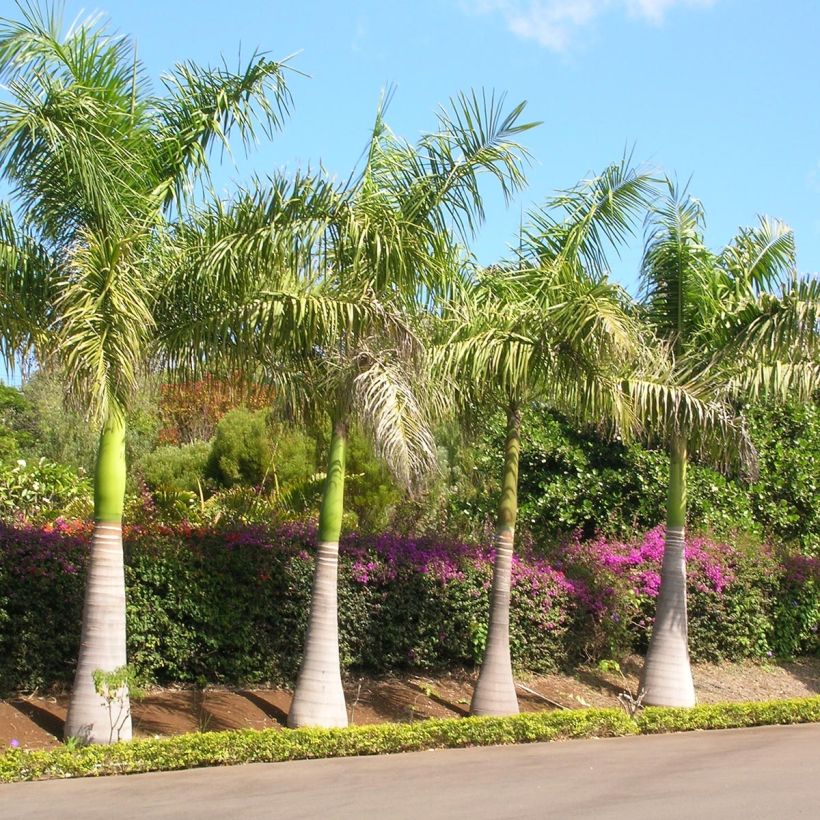

Plant habit
Flowering
Foliage
Botanical data
Roystonea
regia
Arecaceae
Cuban Royal, Cuban Royal Palm, Royal Palm
Central America
Other Palm trees A to Z
Planting and care
This royal palm from Cuba shows very rapid growth, especially when placed in the sun, regularly watered, and provided with warmth. It likes tropical, mild, and humid environments. It perishes below 0°C (32°F) and starts to suffer as soon as the temperature drops below 7°C (44.6°F). Cultivate it in a very large pot to overwinter in a slightly heated conservatory, a tropical greenhouse, or a large, very bright room near the bay window. Plant it in a humus-rich, fertile, light, pliable soil that remains moist all year round. Watering with hard water is well tolerated, and it must be regular. Place it on a saucer filled with clay balls and water. Regularly mist the foliage. Easy to grow under these conditions, it requires little maintenance as the dead leaves fall off on their own. This palm can live outdoors from May and must be brought indoors in early October. This plant dislikes the dry atmospheres of apartments and houses.
Pot Culture:
Choose a very large pot or container with drainage holes, with a capacity of 75 to 100 litres. Prepare a mixture composed of 50% topsoil, 25% ericaceous soil or humus and 25% sand. Mix well. Partially fill your container after placing a drainage layer at the bottom (clay balls, gravel, broken terracotta pots...). Place your palm tree on the mixture, so that the collar (the area where the roots originate) does not exceed the pot but is not buried too deep under the substrate either. Add the rest of the mixture around the root ball, and firmly tamp. Water in several stages to saturate the substrate with water and remove air. Place your palm tree in a very bright location. Outdoors, initially place it in partial shade. After two weeks in partial shade, you can expose it to full sun.
Diseases and pests:
Red spider mites and scale insects are not uncommon in greenhouses and verandas.
Planting period
Intended location
Care
This item has not been reviewed yet - be the first to leave a review about it.
Evergreen shrubs
Haven't found what you were looking for?
Hardiness is the lowest winter temperature a plant can endure without suffering serious damage or even dying. However, hardiness is affected by location (a sheltered area, such as a patio), protection (winter cover) and soil type (hardiness is improved by well-drained soil).

Photo Sharing Terms & Conditions
In order to encourage gardeners to interact and share their experiences, Promesse de fleurs offers various media enabling content to be uploaded onto its Site - in particular via the ‘Photo sharing’ module.
The User agrees to refrain from:
- Posting any content that is illegal, prejudicial, insulting, racist, inciteful to hatred, revisionist, contrary to public decency, that infringes on privacy or on the privacy rights of third parties, in particular the publicity rights of persons and goods, intellectual property rights, or the right to privacy.
- Submitting content on behalf of a third party;
- Impersonate the identity of a third party and/or publish any personal information about a third party;
In general, the User undertakes to refrain from any unethical behaviour.
All Content (in particular text, comments, files, images, photos, videos, creative works, etc.), which may be subject to property or intellectual property rights, image or other private rights, shall remain the property of the User, subject to the limited rights granted by the terms of the licence granted by Promesse de fleurs as stated below. Users are at liberty to publish or not to publish such Content on the Site, notably via the ‘Photo Sharing’ facility, and accept that this Content shall be made public and freely accessible, notably on the Internet.
Users further acknowledge, undertake to have ,and guarantee that they hold all necessary rights and permissions to publish such material on the Site, in particular with regard to the legislation in force pertaining to any privacy, property, intellectual property, image, or contractual rights, or rights of any other nature. By publishing such Content on the Site, Users acknowledge accepting full liability as publishers of the Content within the meaning of the law, and grant Promesse de fleurs, free of charge, an inclusive, worldwide licence for the said Content for the entire duration of its publication, including all reproduction, representation, up/downloading, displaying, performing, transmission, and storage rights.
Users also grant permission for their name to be linked to the Content and accept that this link may not always be made available.
By engaging in posting material, Users consent to their Content becoming automatically accessible on the Internet, in particular on other sites and/or blogs and/or web pages of the Promesse de fleurs site, including in particular social pages and the Promesse de fleurs catalogue.
Users may secure the removal of entrusted content free of charge by issuing a simple request via our contact form.
The flowering period indicated on our website applies to countries and regions located in USDA zone 8 (France, the United Kingdom, Ireland, the Netherlands, etc.)
It will vary according to where you live:
- In zones 9 to 10 (Italy, Spain, Greece, etc.), flowering will occur about 2 to 4 weeks earlier.
- In zones 6 to 7 (Germany, Poland, Slovenia, and lower mountainous regions), flowering will be delayed by 2 to 3 weeks.
- In zone 5 (Central Europe, Scandinavia), blooming will be delayed by 3 to 5 weeks.
In temperate climates, pruning of spring-flowering shrubs (forsythia, spireas, etc.) should be done just after flowering.
Pruning of summer-flowering shrubs (Indian Lilac, Perovskia, etc.) can be done in winter or spring.
In cold regions as well as with frost-sensitive plants, avoid pruning too early when severe frosts may still occur.
The planting period indicated on our website applies to countries and regions located in USDA zone 8 (France, United Kingdom, Ireland, Netherlands).
It will vary according to where you live:
- In Mediterranean zones (Marseille, Madrid, Milan, etc.), autumn and winter are the best planting periods.
- In continental zones (Strasbourg, Munich, Vienna, etc.), delay planting by 2 to 3 weeks in spring and bring it forward by 2 to 4 weeks in autumn.
- In mountainous regions (the Alps, Pyrenees, Carpathians, etc.), it is best to plant in late spring (May-June) or late summer (August-September).
The harvesting period indicated on our website applies to countries and regions in USDA zone 8 (France, England, Ireland, the Netherlands).
In colder areas (Scandinavia, Poland, Austria...) fruit and vegetable harvests are likely to be delayed by 3-4 weeks.
In warmer areas (Italy, Spain, Greece, etc.), harvesting will probably take place earlier, depending on weather conditions.
The sowing periods indicated on our website apply to countries and regions within USDA Zone 8 (France, UK, Ireland, Netherlands).
In colder areas (Scandinavia, Poland, Austria...), delay any outdoor sowing by 3-4 weeks, or sow under glass.
In warmer climes (Italy, Spain, Greece, etc.), bring outdoor sowing forward by a few weeks.


































